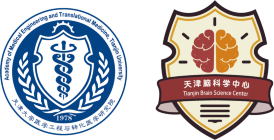
Credit: Tianjin University
When China launched its Tiangong-2 space lab in 2016, one of its many aims was to test the adaptability of brain-computer interface (BCI) technology to a space environment. Successful completion of this world-first trial by Chinese astronauts provided a baseline for comparing BCI performance on Earth and in space. The BCI system used for the test was developed by a team from the Tianjin Brain Science Center (TBSC).
Launched in 2019, stemming from Tianjin University’s Academy of Medical Engineering and Translational Medicine, and its affiliated Huanhu Hospital, TBSC focuses on cognitive science, neuro-engineering, human-machine interface, and brain-inspired intelligence, and their medical applications. Particularly, it is pushing its BCI innovations in the aerospace industry, and rehabilitation medicine.
BCI bypasses nerves and muscle tissues to directly connect the brain to the external world, opening up new communication channels for human expression, said Dong Ming, who heads the centre. “With it, thoughts are turned into observable actions. And by controlling external devices directly with the mind, injured patients could regain mobility, and robots may one day become avatars.”
Ming’s optimism about the future of BCI is based on a decade of research exploring the principles and potential of non-invasive technologies, which, he said, are safe, convenient and efficient. “It is high time to bring these into diverse fields for wide-scale use.”
According to Ming, there are three essential criteria to evaluate BCI performance: precision of identified brain control signals, information transfer rate, and the size of command set. Ming’s young neuroengineering team has set performance records in each of these three measures.
In 2016, they realized a simulated online BCI experiment with the highest information transmission rate to date. They adopted a dynamic stopping strategy to empower high-speed BCI, allowing the adaptive collection of sufficient electroencephalography (EEG) signals for precise measurement.
In 2018, the team achieved a world first with an algorithm for EEG decoding. Brain responses to the stimuli, or event-related potential, can be efficiently decoded at sub-microvolt levels, significantly improving EEG signal measurement precision. The result won the first International Electrophysiology Neuroscan Award. Furthermore, a BCI virtual keyboard developed by the team enables unprecedented brain access to 108 keyboard instructions, reaching a volume of commands three times greater than that of established BCI systems.

Credit: Tianjin University
Besides improving operational performance for astronauts in a space environment, BCI technologies developed at TBSC were also used in rehabilitation for cerebral stroke patients, where traditional approaches offer limited improvement. Combining BCI technology and functional electrical stimulations, the team developed a holistic full-body stroke rehabilitation system. It enables the integration of cortical and muscular activities induced by human intention, improving nerve control ability of limbs. A series of neuro-rehabilitation robots developed by Ming’s team have seen successful use in multiple hospitals.
Following a model emphasizing both clinical and scientific innovations, TBSC is enhancing its collaboration with relevant stakeholders in Tianjin to drive brain-inspired technologies and neurological disease diagnosis and treatment. It is striving to be a world-leading brain science research institution.


